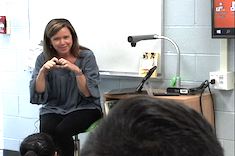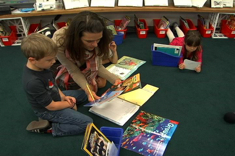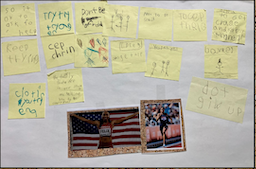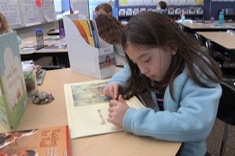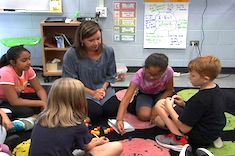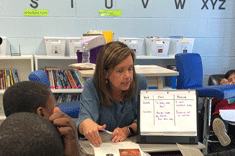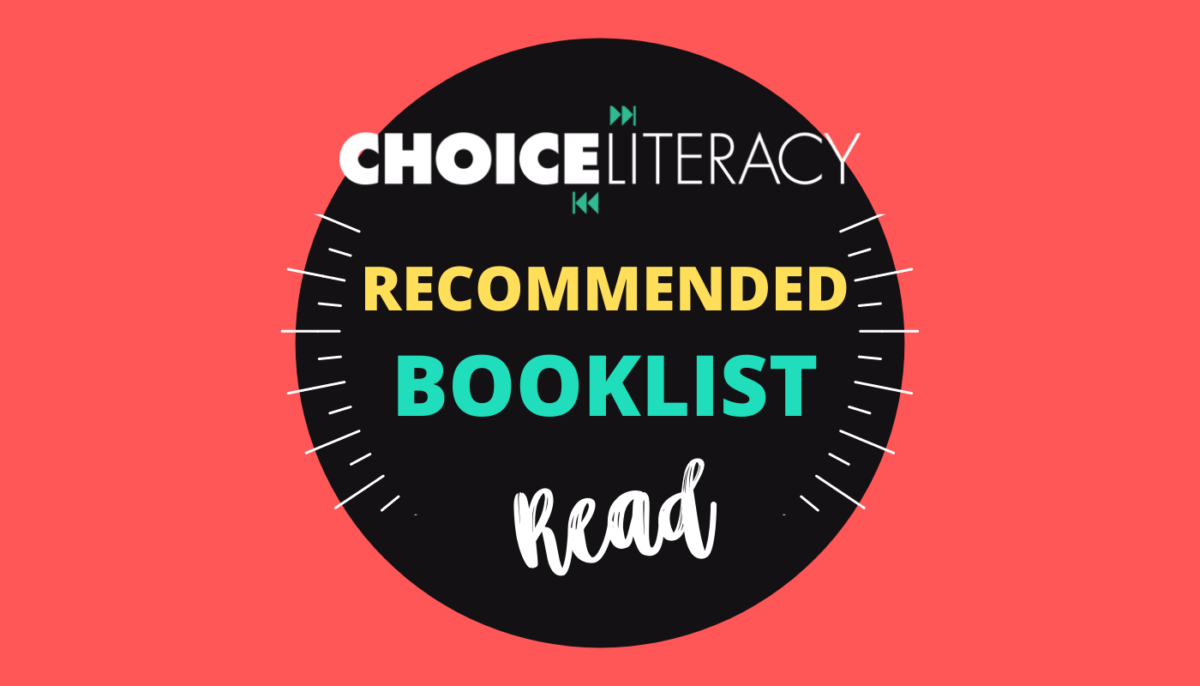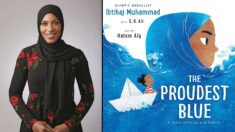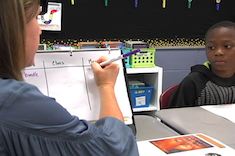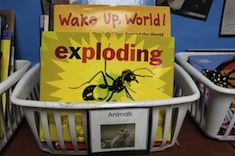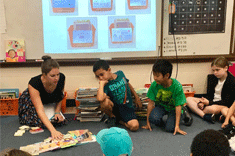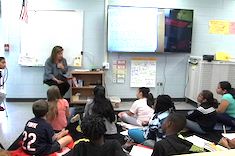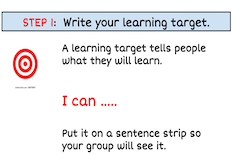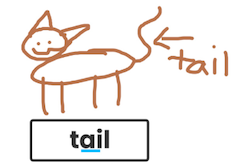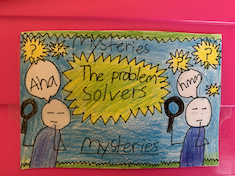3rd
Latest Content
Nourish a Sense of Belonging
Dana Murphy shares ways to nourish a sense of belonging in all students.
Knowing Genres
Mandy Robek reflects on the importance of knowing genres and empowering students to be part of the organization process of the classroom library.
Lifting the Quality of Hands-Down Conversations
Tammy Mulligan leads us through troubleshooting the difficult parts of launching hands-down conversations. This is the third installment of a three-part series about launching hands-down conversations.
Hands-Down Conversations in the Primary Grades
Tammy Mulligan shares the steps to encouraging hands-down conversations in the first days of the school year. This is the second installment of a three-part series about launching hands-down conversations.
Establishing Independent Reading Is Like Planting Seeds
Lisa Mazinas reminds us of the importance of independent reading and how to set it in motion.
Opportunities Offered in Book Shopping
Tara Barnett and Kate Mills remind us of the important opportunities offered during book shopping. Giving yourself permission to slow down and see the opportunities that the routines invite for collaboration and reflection will likely make it feel like you’re maximizing your minutes even more.
Holidays: Where Do They Fit in the Classroom?
Bitsy Parks shares the inspiration and practical ways she celebrates and honors holidays from many cultures in her classroom.
Reading Specialists Can Change the Narrative
Cathy Mere shares ways reading specialists can help teachers get excited about striving readers’ growth by intentionally sharing progress and celebrations.
Setting Up the Intervention Room
Dana Murphy guides reading specialists in setting up intervention rooms to welcome readers.
What Matters More
Dana Murphy shares that by asking “What matters most?” she can make decisions that allow her literacy instruction to be student-centered and authentic.
What I Am Reading the First Week of School
Jen Court plans to fill the first days of first grade with experiences around books. Selecting books carefully to create a sense of community in the classroom from the very beginning is the goal of this first-week booklist.
Creating a Classroom Emotional Intelligence Charter
Mandy Robek outlines the process for creating a class Emotional Intelligence Charter. She includes a booklist to help students expand their vocabulary of different emotions.
Befriending Characters in Times of Grief (Booklist)
Melissa Quimby shares a booklist that offers comforting characters to befriend in times of grief. This is a staple for all classrooms.
Bring Me Something Funny (Booklist)
Cathy Mere offers a booklist in response when a teacher asks her to “Bring me something funny.” These books are sure to fill your classroom with lighthearted laughter.
Using The Proudest Blue in the Classroom
Tara Barnett and Kate Mills share three ways using The Proudest Blue by Ibtihaj Muhammad empowers and strengthens readers in all grades.
Studying Character in Intermediate Grades
Dana Murphy leads us in a step-by-step process to take tried-and-true reading strategies to a more sophisticated level to support students as they grow in interpretation.
Creating Thematic Text Sets for Inquiry
Stephanie Affinito guides us to carefully curate text sets so that not only are they suited to students’ interests, but students are guided through the sequence of reading them. There’s no better way to launch students’ curiosity and reading motivation!
Transitional Chapter Books: A Deeper Look at Features and Formats (Booklist)
Josie Stewart and Hannah Tills share a robust booklist for transitional chapter books. There is more incidental representation than ever, and a variety of formats welcome young readers to chapter books.
Intergenerational Booklist
Bitsy Parks shares the process of building a booklist to deepen the connections and synthesis of culture, family structure, and experiences. Use this booklist of 10 picture books to lead a powerful conversation in your classroom and empower young students to grow in their analysis.
Learning Joy
Bitsy Parks shares the story of a striving student, and pinpoints the elements of a rich workshop classroom that supports finding joy in becoming literate.
Planning for Virtual Literacy Intervention
Stephanie Affinito curated a wise and useful guide to plan virtual literacy intervention. Useful resources are included for those who are teaching remotely or in person.
It’s About Survival
Melissa Styger shares an end-of-year letter writing celebration that allows students to reflect on the year and provides an invitation to next year’s students to be excited about the future.
Student-Planned End-of-Year Celebration
Josie Stewart and Hannah Tills know the end of the school year is full, yet they take the time to reflect and celebrate what learners have built throughout the year by asking students to create a plan for a final celebration.
A Collection of Treasured Life Lessons
Melissa Quimby leads her students in rich thinking about life lessons and encourages them to treasure the wisdom from books.
Determining Importance in Fiction
Dana Murphy guides us in listening and responding to students during strategy-building lessons to grow readers. In this example, she shows the complexity and nuances of direct instruction to build comprehension strategies.
Student-Led Reading Seminars
Tammy Mulligan organizes her second graders to teach reading seminars to their peers. She outlines the steps to make this engaging practice a reality in any classroom.
Picture of the Week
Bitsy Parks shares a Picture of the Week routine that builds real-life literacy skills, and documents and celebrates important moments throughout the school year.
Student-Created Assessments
Ruth Metcalfe releases responsibility to her first-grade class to create formative assessments and take ownership in their learning.
Celebrating Reading Identities in the Elementary Classroom
Melissa Quimby offers a creative and practical idea to get to know students’ reading identities.
Adding Energy to the Classroom Library
Mandy Robek shares ways to reorganize and revamp your classroom library to energize students as readers.
Browse Content By
Type
Category
- Assessment Tools
- Big Fresh Archives
- Booklists
- Choice Numeracy
- Classroom Design
- Common Core
- Community Building
- Conferring
- Content Literacy
- Digital Literacy
- English Language Learners
- Equity
- Family Relations
- Free Samples
- Guiding Groups
- Leadership
- Literacy Coaches
- Mentor Texts
- Minilessons
- New Teacher Mentors
- Podcasts
- Poetry
- Quote Collections
- Reading Strategies
- Self Care
- Struggling and Striving Learners
- Talking and Listening
- Teacher Study Groups
- Teaching Reading
- Teaching Writing
- Word Study and Vocabulary
Author
- Melissa Quimby
- Nawal Qarooni
- Gwen Blumberg
- Julie Cox
- The Lead Learners
- Hannah Tills
- Josie Stewart
- Ruth Metcalfe
- Mallory Messenger
- Becca Burk
- Jodie Bailey
- Vivian Chen
- Mary Brower
- Tiffany Abbott Fuller
- Stephanie Affinito
- Ruth Ayres
- Leigh Anne Eck
- Heather Fisher
- Shari Frost
- Julie Johnson
- Suzy Kaback
- Gigi McAllister
- Shirl McPhillips
- Melanie Meehan
- Cathy Mere
- Debbie Miller
- Tara Barnett and Kate Mills
- Tammy Mulligan
- Dana Murphy
- Bitsy Parks
- David Pittman
- Brenda Power
- Heather Rader
- Matt Renwick
- Mandy Robek
- Christy Rush-Levine
- Gretchen Schroeder
- Jen Schwanke
- Brian Sepe
- Katherine Sokolowski
- Stella Villalba
- Jennifer Vincent
Grade Level
Choice Literacy Membership
Articles
Get full access to all Choice Literacy article content
Videos
Get full access to all Choice Literacy video content
Courses
Access Choice Literacy course curriculum and training

